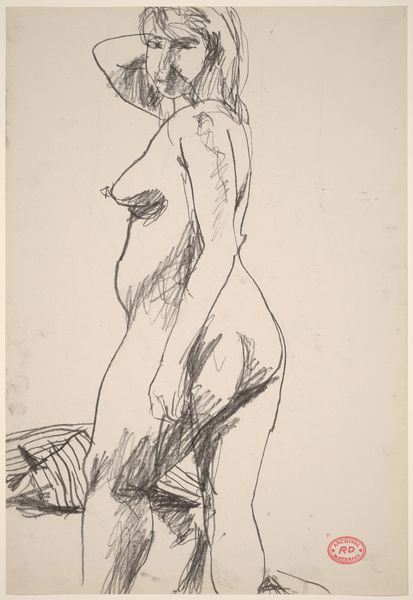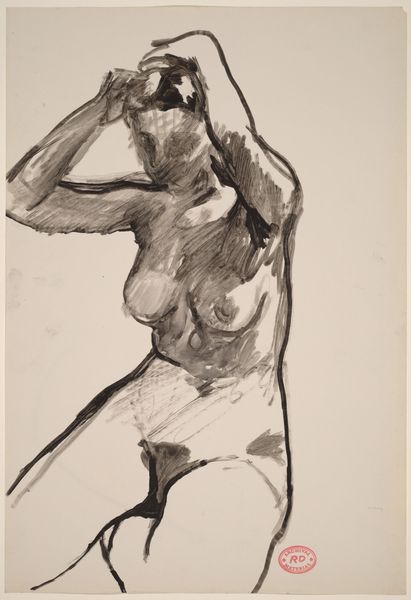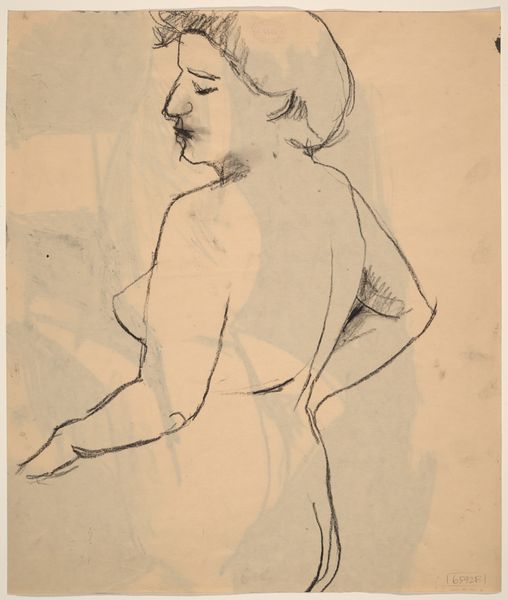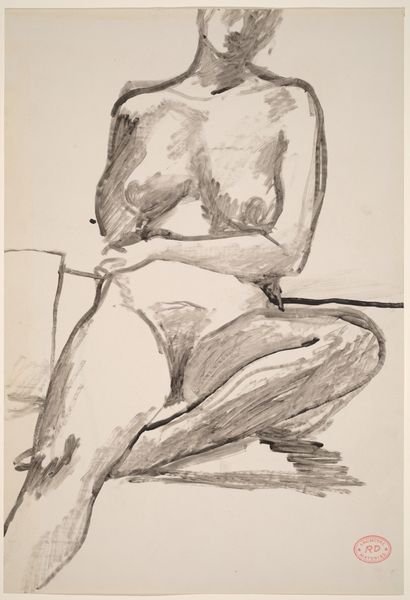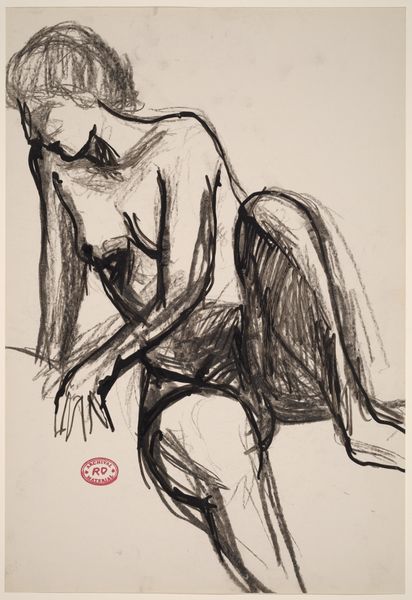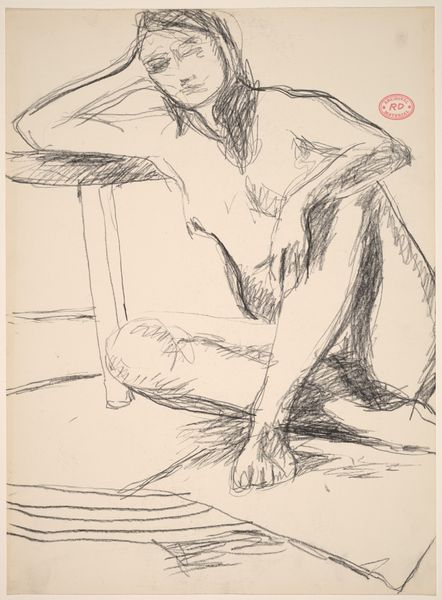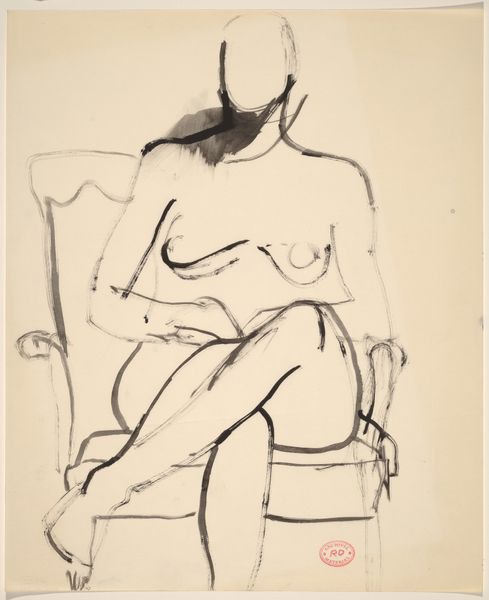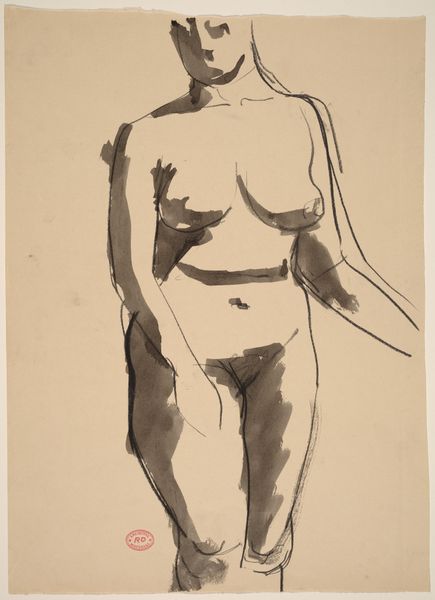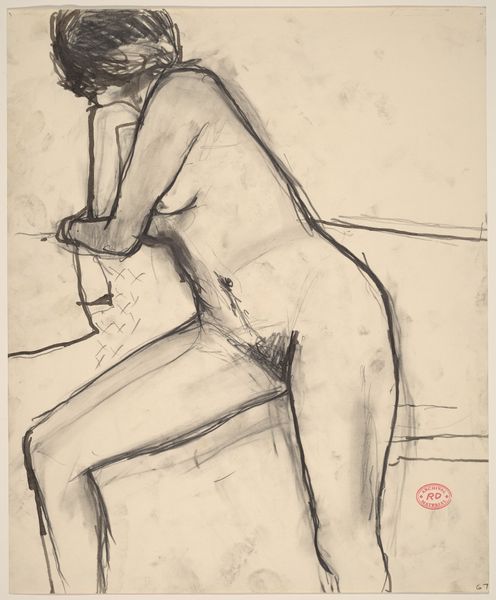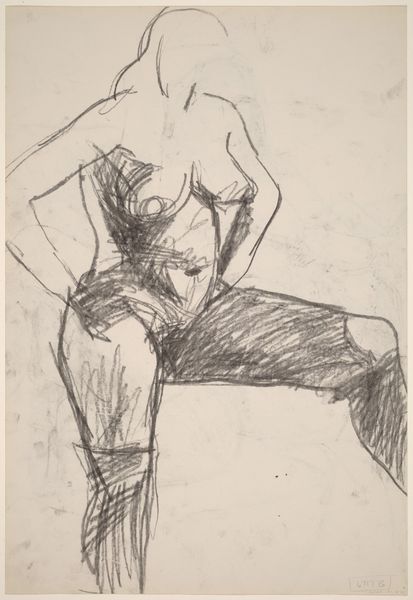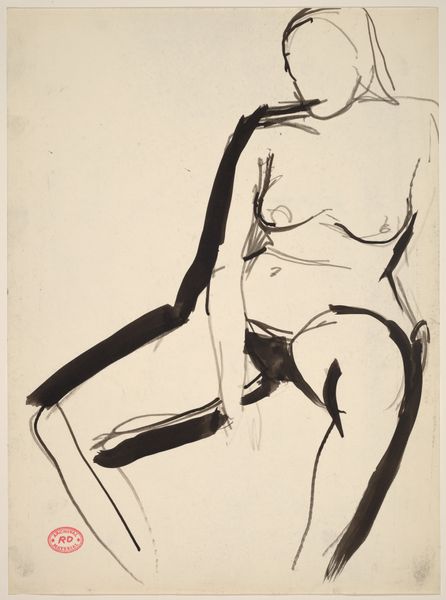![Untitled [side view of a female nude] [recto] by Richard Diebenkorn](/_next/image?url=https%3A%2F%2Fd2w8kbdekdi1gv.cloudfront.net%2FeyJidWNrZXQiOiAiYXJ0ZXJhLWltYWdlcy1idWNrZXQiLCAia2V5IjogImFydHdvcmtzLzVjZTBlZWQ4LWFjMjktNDUyNS04MGIyLTcxMzc3MzljOWNlYS81Y2UwZWVkOC1hYzI5LTQ1MjUtODBiMi03MTM3NzM5YzljZWFfZnVsbC5qcGciLCAiZWRpdHMiOiB7InJlc2l6ZSI6IHsid2lkdGgiOiAxOTIwLCAiaGVpZ2h0IjogMTkyMCwgImZpdCI6ICJpbnNpZGUifX19&w=3840&q=75)
drawing, ink, pencil
#
drawing
#
pencil sketch
#
figuration
#
bay-area-figurative-movement
#
ink
#
pencil
#
abstraction
#
nude
Dimensions: overall: 37.2 x 47 cm (14 5/8 x 18 1/2 in.)
Copyright: National Gallery of Art: CC0 1.0
Curator: Here we have an untitled drawing by Richard Diebenkorn, created sometime between 1955 and 1967, featuring a side view of a female nude rendered in ink and pencil. Editor: It has a somewhat mournful quality, don't you think? The heavy use of dark ink in contrast with the spare, almost frantic pencil lines...it’s a study in contrasts, a body captured with both decisiveness and doubt. Curator: Indeed. Consider how the rapid, gestural marks convey form—almost collapsing the distinction between representation and abstraction. The materiality speaks to Diebenkorn’s engagement with postwar art movements and the anxiety toward objective, representational rendering. Editor: Yet the “anxiety,” as you put it, might reflect broader tensions surrounding the nude within artistic canons. It's impossible to ignore the historical implications of representing the female form, the male gaze, and the complex relationship between artist, model, and audience, even within the supposed artistic freedom of postwar America. Were female models and artists able to pursue abstraction at this time without also challenging societal norms and expectations? Curator: But observe the rhythmic arrangement of line and shape, creating visual harmonies that echo modernist formal principles. See how negative space defines form just as much as the ink and pencil? I believe Diebenkorn’s approach transcends simple social critique, instead aspiring toward an objective articulation of aesthetic elements. Editor: I think we cannot separate form from historical intention. The aesthetic elements are the way through, the strategy with which one challenges convention or participates in maintaining it. In this instance, is he re-interpreting or re-stating established practice? Curator: Perhaps it is a conversation between these ideas? After all, by this period he’s actively grappling with representational work while establishing the compositional vocabulary that shapes his famous "Ocean Park" series. The nude could simply be a site to explore those formal relationships. Editor: It does reflect an interesting moment, both artistically and socially, that is very present still with the many considerations that we have with figures now. It allows for an incredible range of aesthetic readings which continue to evolve over time. Curator: It's fascinating to view it in such a multifaceted manner, contextualized as we look directly at line and shape in play.
Comments
No comments
Be the first to comment and join the conversation on the ultimate creative platform.

